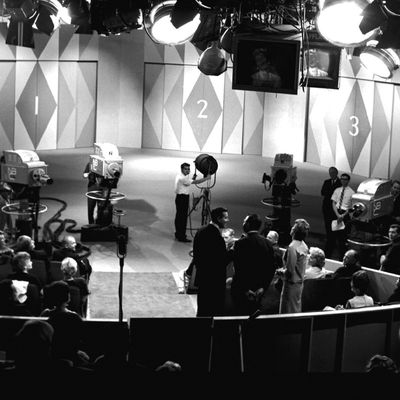
Take a second and imagine yourself in this hypothetical scenario: You’re on a game show, one of those shows where there’s a prize hiding behind one of several doors. You make your guess — let’s say you point to Door No. 1 — and the host opens a different one, Door No. 2, to show you that there’s nothing there. You now have a choice: You can stick with your original guess, or you can shift to the only option left in the running, Door No. 3. Do you switch?
Or, another question: Does it really matter? Three options, one eliminated, two left — sounds like you’ve got a 50-50 chance of finding that prize either way. But this is a logic puzzle that seemingly defies logic: You should always switch. Switching, in fact, doubles your chances of winning.
That’s the premise of the Monty Hall problem, named after the host of the show Let’s Make a Deal. The puzzle, originally written in a letter to the American Statistician magazine in 1975, first entered the mainstream public consciousness in the early 1990s, when Parade writer Marilyn vos Savant devoted a column to unpacking it — and since then, it’s gone on to stump some of the sharpest mathematical minds in the country. Here, according to vos Savant, is how it works:
The winning odds of 1/3 on the first choice can’t go up to 1/2 just because the host opens a losing door … When you first choose door #1 from three, there’s a 1/3 chance that the prize is behind that one and a 2/3 chance that it’s behind one of the others. But then the host steps in and gives you a clue. If the prize is behind #2, the host shows you #3, and if the prize is behind #3, the host shows you #2. So when you switch, you win if the prize is behind #2 or #3. You win either way! But if you don’t switch, you win only if the prize is behind door #1.
It makes sense, sort of, if you spend a long time mulling it over (or, as vos Savant suggested, play the game yourself with three cups and one small object). But if you’re having a hard time wrapping your head around it, you’re in good company. As Princenomics has reported, after vos Savant tackled the problem, scores of readers — including several mathematicians and statisticians — wrote in to chastise her for publishing an answer they believed was incorrect. (Or just to vent their frustration: One letter simply said, in its entirely, “You are the goat!”) The outrage and disbelief were so sweeping that she revisited the problem four more times in her column over the next couple years; in the aftermath, people have written books about the widespread refusal to accept the true explanation.
Which makes the Monty Hall problem a perfect example of a frustrating hiccup in the way our brains work: We tend to cling stubbornly to the belief that we’re correct, even when faced with direct evidence to the contrary. Psychologists call it the conservatism bias: Even when all signs point to the suggestion that we should change our answer, we stick with the old and shun the new. It can happen when you’re answering a multiple-choice quiz, or deciding how to invest your money, or figuring out whom to vote for. It’s part of what kept people smoking even after research began to emerge showing a link between cigarettes and cancer; it’s what propels you to move forward with signing a lease even after you’ve noticed leaky pipes in your dream apartment.
Here, that bias is working on two levels. On the first, we have all the people who read about the Monty Hall problem, came to their own conclusion that switching doesn’t matter, and then had a tough time accepting the idea that it does. And on the second, we have the people actually running through the problem rather than just reacting to it: They choose Door No. 1, receive a piece of new information that should influence their choice, and still double down on the original decision. In one 1995 study in the journal Personality and Social Psychology Bulletin, only around 12 percent of participants chose to switch on the first try (though, weirdly, another study found that pigeons actually catch on pretty quickly).
And while the Monty Hall problem itself is build on a highly specific set of circumstances, its applications ripple out into regular life: Most of us will never be a game-show contestant, but we’ll all make hundreds of decisions every day of our lives. It takes more mental energy to incorporate new information into your decision-making process once you’ve already settled on an outcome, but it could very well be worth the effort. Sometimes, it’s best to ignore your intuition and force your brain to slog through all the options.

